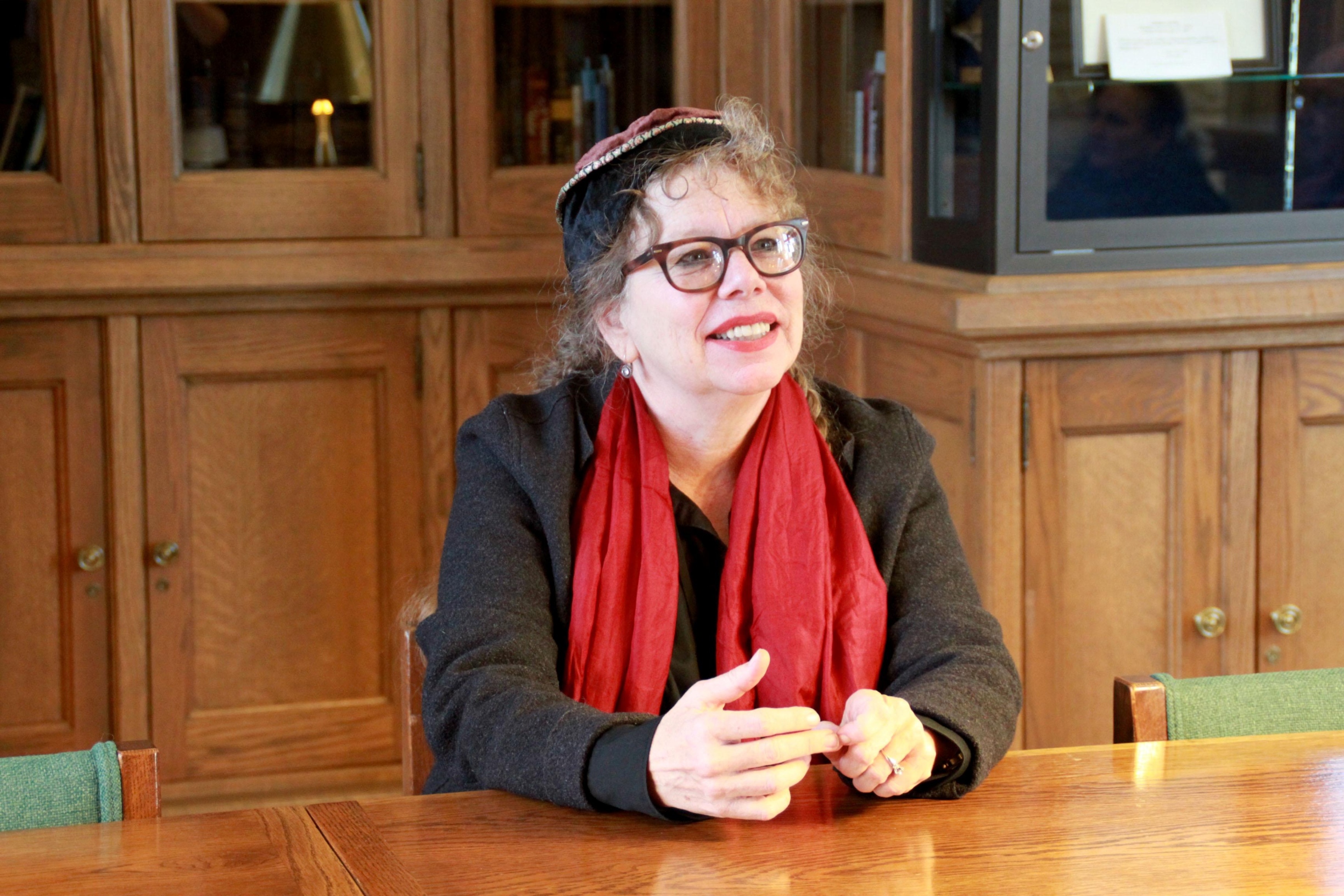
Both roaring laughter and pensive silence filled the Lawrence Memorial Chapel as author and cartoonist Lynda Barry explored the importance of creativity during Lawrence’s third convocation of the 2012-13 school year.
During her visit at Lawrence Thursday, Jan. 24, Barry shared her ideas on the importance of creativity in the lives of both children and adults. The topic of Barry’s convocation was, as she puts it, “the role of images in people’s lives and the science behind what we call the arts.”
Barry’s concept of images is that they are psychological tools that people use to maintain wellness. Her theory has been formed by the images of characters given to stuffed animals by children, the use of images in V. S. Ramachandran’s experiments to cure phantom limb pain and arthritis, and the power of doodling when adults are multitasking, which has been scientifically shown to increase memory.
“Images are a form of transportation. They’re medicine; they are all these things,” said Barry. “They’re so much more than a good painting or whether you can sing or not.”
According to Barry, that was how she ended up at Lawrence in the first place: because of the connections formed between readers and the images in Barry’s books, which include “One! Hundred! Demons!,” “Cruddy: An Illustrated Novel” and “What It Is,” which won the 2009 Eisner Award for Best Reality-Based Work.
Another important facet of Barry’s talk was the relationship between creative play and mental health.
“Almost everyone has a tacit understanding of [that] relationship,” Barry said. To illustrate this, Barry asked the audience what would happen if there were an experiment in which a child was given a good life but was never allowed to play with toys until he or she was 18.
“Almost everyone around the world would know that person would be mentally messed up. That person would be crazy!” Barry said bluntly, who was met with a few laughs from the audience. “Why do we know that? How do we know it? Well, partly we know it from our own experience, but partly it’s just something people know.”
In her explanation of play, Barry said that she believes adults confuse play with fun. While fun can include talking with friends or going to a party on a Friday night, play has much more to do with creative activities, which she says leads to mental and emotional balance.
But instead of participating in creative endeavors themselves, Barry said that adults are instead relying on other people to be creative and fulfill that need.
“Adults only watch or look at pictures, or maybe they go to a show,” said Barry.
But this isn’t the case at Lawrence, according to Barry. Art is integrated into the day-to-day life at Lawrence, and for Barry this is crucial. Because Lawrence has a unique focus on the arts, or, as she would say, on play, she believes that Lawrence was a particularly appropriate place for her presentation.
“One of the things that struck me immediately was from the minute I went to the first building on campus this morning, there was music!” Barry exclaimed, throwing her hands in the air and smiling broadly. She encouraged Lawrence to keep this up.
“A place like Lawrence is an extraordinary place, especially in this day and age,” she said.
Junior Liz Vidulich felt that Barry’s talk, particularly her thoughts on the importance of creativity, resonated with her.
“I’m still not entirely clear on the concept of the ‘image,’ but I was very touched by how confident she was that everyone has creative capacity inside of us that we need to stop shutting down,” said Vidulich.
Assistant Professor of Economics Adam Galambos agreed with Vidulich and added that Barry’s lecture connected well with the theme of this year’s convocations: “Thought into action.”
“Barry spoke eloquently about play as a fundamental and central human experience, and about the importance of curiosity,” said Galambos. “Play and curiosity are very relevant to learning, research, problem-solving. Also, her call to play can be understood as a call to find one’s passion and to pursue it creatively.”
While the Chapel was filled with energy during Barry’s convocation, Vidulich noted that it was not completely filled with people.
“I must say I was disappointed by poor attendance,” said Vidulich, especially because she believes that this was her favorite convocation so far during her time at Lawrence.
But Barry was also able to connect with students who were not necessarily at the convocation. To wrap up her visit at Lawrence, she conducted a three-hour art and writing workshop that same day, which was attended by over 40 students.
Lawrence’s convocation series will continue Tuesday, April 16 with contemporary video artist Bill Viola.
